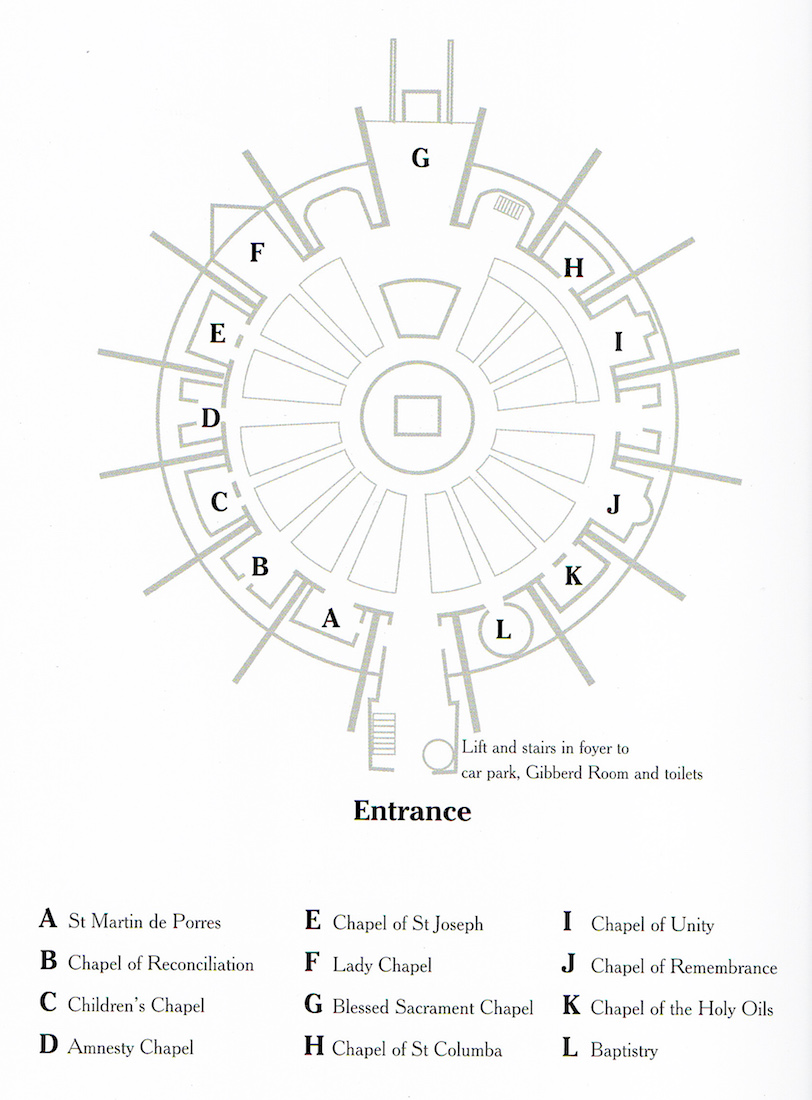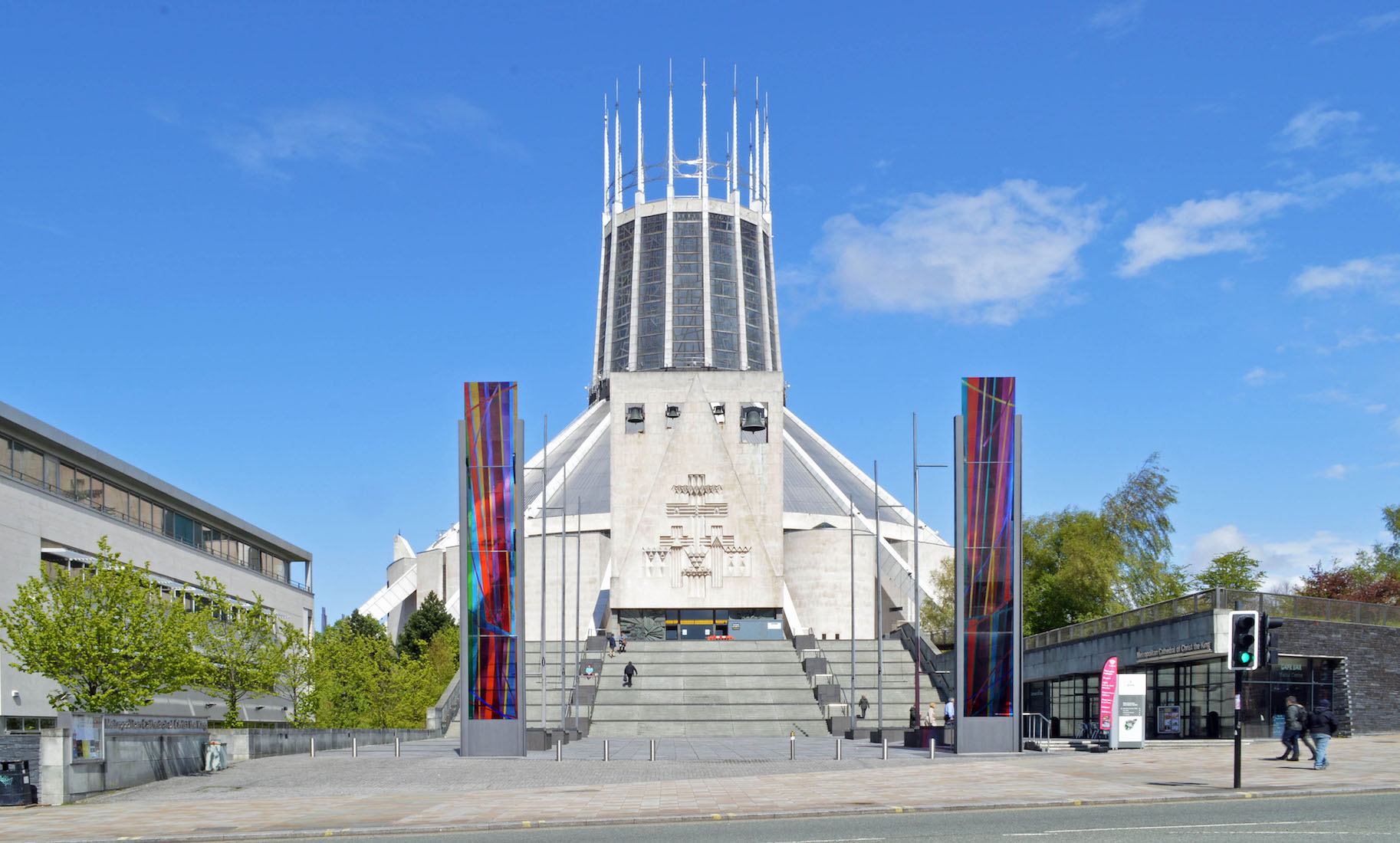LIVERPOOL CATHEDRAL
ENGLAND CATHOLIC
PAUL SCOTT

SATELLITE VIEW
From the railway station, we approach the Cathedral along Mount Pleasant (Road) to Hope Street. The yellow dots then indicate our exploratory walk in a clockwise direction around the exterior, before entering the Cathedral. The large rectangular base contains a carpark, and a large crypt at the Northern end. The circular Cathedral stands high above its surroundings.
We won’t be concerned with liturgical directions with this Cathedral: this is a Cathedral quite unlike any other!

This Cathedral has a striking plan – in the round – with a central auditorium under a central lantern tower, and surrounded by chapels.
You can access intermediate points in the tour by a tap / click on the following links:
A brief history of the Cathedral is given below. However, if you want to begin your tour of the Cathedral immediately, tap / click on START . You can also access intermediate points in the tour by a tap / click on the links above.
NOTE ON MAGNIFYING IMAGES
With this website format the images are large enough for most purposes. If there is a need for greater magnification of an image, go to the identical photo on
https://www.flickr.com/photos/paulscottinfo/albums
and use Command - + (Mac) or Windows - + (Windows).
HISTORY
[Wikipedia]
Liverpool Metropolitan Cathedral, officially known as the Metropolitan Cathedral of Christ the King and locally nicknamed ‘Paddy's Wigwam’, is the seat of the Archbishop of Liverpool and the mother church of the Roman Catholic Archdiocese of Liverpool in Liverpool. The Grade II* Metropolitan Cathedral is one of Liverpool’s many listed buildings.
The cathedral’s architect, Frederick Gibberd, was the winner of a worldwide design competition. Construction began in 1962 and was completed in 1967. Earlier designs for a cathedral were proposed in 1933 and 1953, but none were completed.
Liverpool Metropolitan Cathedral is located on Mount Pleasant, L35TQ. It is located next to the University of Liverpool which is also known for its architecture.
To read more of the interesting history of this Cathedral, go to:
https://en.wikipedia.org/wiki/Liverpool_Metropolitan_Cathedral



